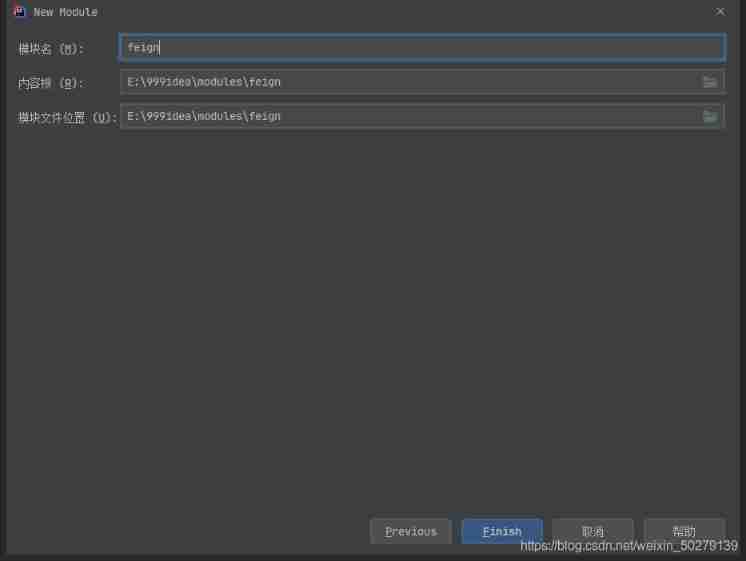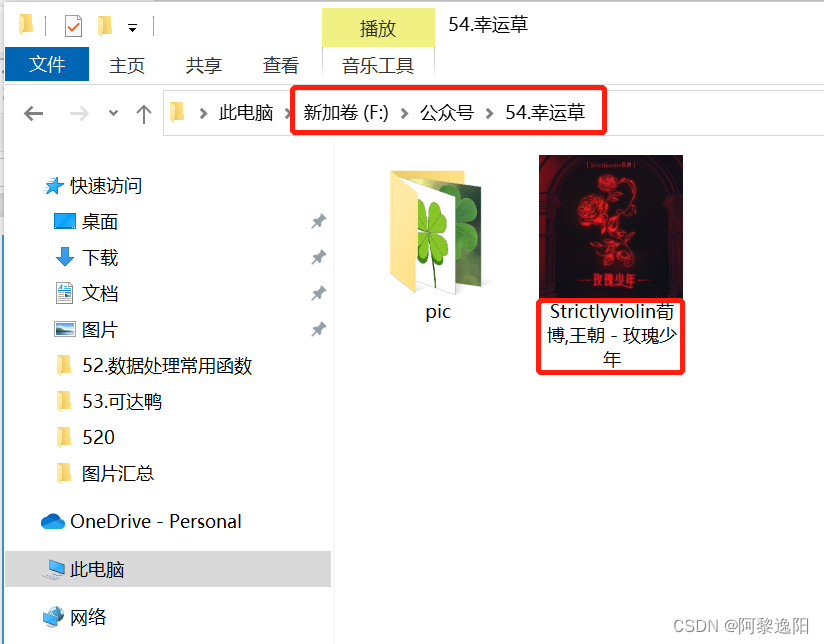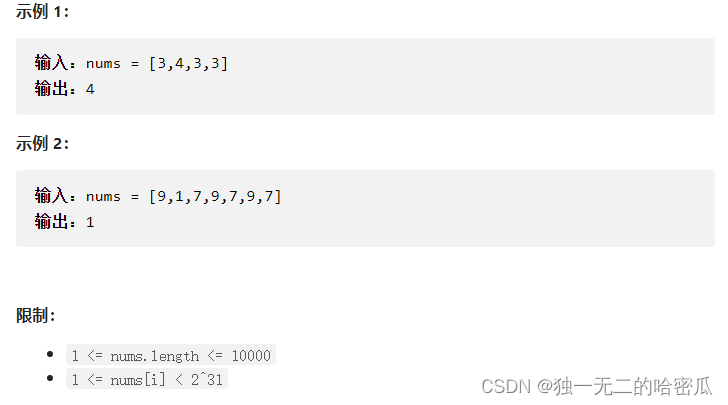当前位置:网站首页>Detailed explanation of interview questions: the history of blood and tears in implementing distributed locks with redis
Detailed explanation of interview questions: the history of blood and tears in implementing distributed locks with redis
2022-07-07 23:56:00 【Ashes collector】
Use Redis What is the detailed scheme of distributed lock ?
A simple answer is to use Redission client .Redission The lock scheme in is Redis The perfect detailed scheme of distributed lock .
that ,Redission Why is the lock scheme in perfect ?
Just right , I use Redis I have rich experience in making distributed locks , In practice , Many uses have also been explored Redis A distributed lock scheme , After countless blood and tears .
therefore , Talking about Redission Why is the lock perfect before , Let's first show you that I used Redis Problems encountered in making distributed locks .
I used to use it. Redis Do distributed locks to solve the problem of a user grabbing coupons . The business requirements are as follows : When the user receives a coupon , The number of coupons must be reduced by one , If you run out of coupons , Users are not allowed to rob again .
At the time of implementation , First read the number of coupons from the database to judge , When the coupon is greater than 0, Allow to receive coupons , then , Then reduce the number of coupons by one , Write back to the database .
At that time, due to the large number of requests , therefore , We used three servers to do the diversion .

There's a problem :
If... On one of the servers A After the app gets the number of coupons , Due to the processing of relevant business logic , The number of coupons in the database is not updated in time ; stay A When the application processes business logic , On another server B The app has updated the number of coupons . that , etc. A When applying to update the number of coupons in the database , It will B The number of coupons updated by the application overwrites .
See here , Someone may be strange , Why not use it directly here SQL:
update Coupon list set Number of coupons = Number of coupons - 1 where Coupon id = xxx
The reason is to do so , Without distributed lock coordination , The number of coupons may be directly negative . Because when the number of coupons is 1 When , If two users request to grab coupons through two servers at the same time , All meet the requirement that the coupon is greater than 0 Conditions , And then do this SQL sentence , As a result, the number of coupons directly becomes -1 了 .
Others say you can use an optimistic lock , For example, use the following SQL:
update Coupon list set Number of coupons = Number of coupons - 1 where Coupon id = xxx and version = xx
In this way, there is a certain probability , It is likely that the data can not be updated all the time , A condition that results in a long retry .
therefore , After comprehensive consideration , We adopted Redis Distributed lock , By mutual exclusion , To prevent multiple clients from updating the number of coupons at the same time .
at that time , The first thing we think about is the use of Redis Of setnx command ,setnx The command is actually set if not exists Abbreviation .
When key After setting the value successfully , Then return to 1, Otherwise it returns 0. therefore , here setnx Setting success can be expressed as obtaining the lock , If you fail , It means that there is a lock , It can be regarded as a failure to acquire a lock .
setnx lock true
If you want to release the lock , perform del Instructions , hold key Delete it .
del lock
Take advantage of this feature , We can make the system before executing the coupon logic , Go first Redis In the implementation of setnx Instructions . Then execute the result according to the instruction , To determine whether the lock has been obtained . If you get , Continue to carry out business , Use after execution del Command to release the lock . If not , Just wait for a certain time , Get the lock again .

At first glance , There's nothing wrong with all this , Use setnx Instructions do have the desired mutual exclusion effect .
however , This is based on the fact that all operating environments are normal . Once an exception occurs in the running environment , The problem arises .
Think about it , The application that holds the lock suddenly crashes , Or the server is down , What happens ?
This will cause a deadlock —— An app that holds a lock cannot release the lock , Other applications have no chance to acquire locks at all . This can cause huge online accidents , We need to improve the scheme , Solve this problem .
How to solve it ? We can see , The root cause of deadlock is , Once there is a problem with the application holding the lock , You won't release the lock . Think in this direction , Can be in Redis Give up key An expiration date .
In this case , Even if something goes wrong ,key It will also be released after a period of time , Has this problem been solved ? actually , That's exactly what everyone did .
however , because setnx The instruction itself cannot set the timeout , So there are usually two ways to do this :
1、 use lua Script , In the use of setnx After the instruction , Reuse expire Give orders to key Set expiration time .
if redis.call("SETNX", "lock", "true") == 1 then
local expireResult = redis.call("expire", "lock", "10")
if expireResult == 1 then
return "success"
else
return "expire failed"
end
else
return "setnx not null"
end
2、 Use it directly set(key,value,NX,EX,timeout) Instructions , Set the lock and timeout at the same time .
redis.call("SET", "lock", "true", "NX", "PX", "10000")
The above two methods , You can use either way .
The script for releasing the lock is the same in both ways , Call directly Redis Of del Command can .
up to now , Our locks are mutually exclusive , Without problems with some systems that hold locks , Causing a deadlock . Is that perfect ?
Suppose there's a situation like this , If an application holds a lock , What happens if the holding time exceeds the timeout we set ? Two things happen :
Found the system in Redis Set in the key There is still
Found the system in Redis Set in the key non-existent
The first situation is normal . Because after all, you're working overtime ,key It is also logical to be cleared normally .
But the most terrible thing is the second situation , Found set key There is still . What does this ? Explain the existing key, Is set by another application .
At this time, if the application holding the lock times out calls del Command to delete the lock , Will accidentally delete the lock set by others , This will directly lead to system business problems .
therefore , To solve this problem , We need to continue with Redis Make changes to the script …… Destroy it , Tired ……

First , We want the application to acquire the lock , To set a unique value that only the application knows .
Through this unique value , When the system releases the lock , You can identify whether the lock is set by yourself . If you set it yourself , Just release the lock , Delete key; If not , Then do nothing .
The script is as follows :
if redis.call("SETNX", "lock", ARGV[1]) == 1 then
local expireResult = redis.call("expire", "lock", "10")
if expireResult == 1 then
return "success"
else
return "expire failed"
end
else
return "setnx not null"
end
perhaps
redis.call("SET", "lock", ARGV[1], "NX", "PX", "10000")
here ,ARGV[1] Is a parameter variable that can be passed in , You can pass in a unique value . For example, only one knows UUID Value , Or through the snowball algorithm , Generate only the one you own ID.
The script for releasing the lock is changed to this :
if redis.call("get", "lock") == ARGV[1]
then
return redis.call("del", "lock")
else
return 0
end
You can see , From a business perspective , in any case , Our distributed locks can meet the real business needs . Can be mutually exclusive , An immortal lock , It won't delete other people's locks by mistake , Only their own locks , You can release .
Everything is so beautiful !!!
unfortunately , There's another hidden danger , We do not rule out . The hidden danger is Redis Oneself .
Need to know ,lua Scripts are used in Redis On the singleton of . once Redis There's something wrong with it , Our distributed lock won't work , Distributed locks don't work , It will have a significant impact on the normal operation of the business , It's something we can't accept .
therefore , We need to take Redis Make it highly available . In general , solve Redis The problem of high availability , Both use master-slave clusters .
But the master-slave cluster , New problems will be introduced . The main problem is ,Redis There is a delay in master-slave data synchronization . This boundary condition produces a delay : When on the host Redis The lock has been built , But the lock data has not been synchronized to the slave , The host is down . And then , The slave is lifted to the host , At this time, there is no lock data set by the master before on the slave —— The lock is lost …… lost …… 了 ……

Come here , Finally, I can introduce Redission( Open source Redis client ) 了 , Let's see how it is implemented Redis Distributed locked .
Redission The idea of implementing distributed locks is very simple , Whether it's a master-slave cluster or Redis Cluster colony , It will be applied to every in the cluster Redis, Execute the settings one by one Redis Lock script , That is, each in the cluster Redis Will contain the set lock data .
Let's introduce... Through an example .
hypothesis Redis Cluster has 5 Taiwan machine , At the same time, according to the evaluation , The lock timeout is set to 10 Second is more suitable .
The first 1 Step , Let's first calculate the total waiting time of the cluster , The total waiting time of the cluster is 5 second ( The timeout of the lock 10 second / 2).
The first 2 Step , use 5 Seconds divided by 5 Number of machines , The result is 1 second . This 1 Second is to connect each Redis Acceptable waiting time .
The first 3 Step , Connect in turn 5 platform Redis, And implement lua Script set lock , Then make a judgment :
If in 5 In seconds ,5 All machines have execution results , And more than half ( That is to say 3 platform ) The machine has set the lock successfully , It is considered that setting the lock is successful ; Less than half of the machines set the lock successfully , Failure .
If exceeded 5 second , No matter how many machines set the lock successfully , They all think that setting the lock failed . such as , front 4 It took a total of 3 second , But in the end 1 This machine uses 2 No result in seconds , The total waiting time has exceeded 5 second , Even if more than half of them succeed , This also counts as a failure .
One more word , In many business logic , In fact, there is no need for lock timeout .
such as , Batch execution of processed tasks in the early morning , Distributed locks may be required to ensure that tasks are not repeated . here , It's not clear how long the task will take . If you set the timeout of the distributed lock, here , It doesn't make much sense . however , Don't set timeout , It will cause deadlock problem again .
therefore , The general solution to this problem is , Each client holding a lock starts a background thread , By performing specific lua Script , To constantly refresh Redis Medium key Timeout time , So that before the task is completed ,key Will not be removed .
The script is as follows :
if redis.call("get", "lock") == ARGV[1]
then
return redis.call("expire", "lock", "10")
else
return 0
end
among ,ARGV[1] Is a parameter variable that can be passed in , A unique value that represents the system that holds the lock , That is, only the client holding the lock can refresh key Timeout for .
Only this and nothing more , Only when a complete distributed lock is implemented . The summary implementation scheme is as follows :
Use set Command to set the lock flag , There must be a timeout , So that the client crashes , You can also release the lock ;
For those that do not require a timeout , You need to implement a thread that can continuously refresh the lock timeout ;
Each client that acquires the lock , stay Redis Set in the value It has to be unique , To identify which client set the lock ;
In a distributed cluster , Directly set the same timeout and lock mark for each machine ;
In order to ensure that the locks set by the cluster will not timeout due to network problems , The network waiting time and lock timeout must be set reasonably .
This distributed lock satisfies the following four conditions :
Only one client can hold the lock at any time ;
Deadlock cannot occur , There was a problem when a client held the lock and did not unlock it , It can also ensure that other clients continue to hold the lock ;
Lock and unlock must be the same client , The lock added by the client can only be solved by itself ;
As long as most Redis The node is normal , The client can use the lock normally .
Of course , stay Redission The script in the , In order to ensure the re-entry of the lock , Right again lua The script has been modified , Now put the complete lua The script is posted below .
Get the lock lua Script :
if (redis.call('exists', KEYS[1]) == 0) then
redis.call('hincrby', KEYS[1], ARGV[2], 1);
redis.call('pexpire', KEYS[1], ARGV[1]);
return nil;
end;
if (redis.call('hexists', KEYS[1], ARGV[2]) == 1) then
redis.call('hincrby', KEYS[1], ARGV[2], 1);
redis.call('pexpire', KEYS[1], ARGV[1]);
return nil;
end;
return redis.call('pttl', KEYS[1]);
Script of corresponding refresh lock timeout :
if (redis.call('hexists', KEYS[1], ARGV[2]) == 1) then
redis.call('pexpire', KEYS[1], ARGV[1]);
return 1;
end;
return 0;
Corresponding release lock script :
if (redis.call('hexists', KEYS[1], ARGV[3]) == 0) then
return nil;
end;
local counter = redis.call('hincrby', KEYS[1], ARGV[3], -1);
if (counter > 0) then
redis.call('pexpire', KEYS[1], ARGV[2]);
return 0;
else
redis.call('del', KEYS[1]);
redis.call('publish', KEYS[2], ARGV[1]);
return 1;
end;
return nil;
Up to now , Use Redis The detailed scheme of distributed lock is finished .
I have written a bumpy experience step by step , It also states the details of each problem and how to solve it , I hope you can get something from it .
Finally, let me remind you , Use Redis Clusters do distributed locks , There is some controversy , We also need to use it in practice , According to the reality , Make better choices and trade-offs .
边栏推荐
- 【LeetCode】20、有效的括号
- 【编程题】【Scratch二级】2019.12 绘制十个正方形
- About the difference between ch32 library function and STM32 library function
- The function is really powerful!
- Chisel tutorial - 05 Sequential logic in chisel (including explicit multi clock, explicit synchronous reset and explicit asynchronous reset)
- AWS AWS help error
- 【编程题】【Scratch二级】2019.09 制作蝙蝠冲关游戏
- One of the anti climbing methods
- Reverse output three digit and arithmetic sequence
- Tools for debugging makefiles - tool for debugging makefiles
猜你喜欢
随机推荐
正畸注意事项(持续更新中)
Anaconda+pycharm+pyqt5 configuration problem: pyuic5 cannot be found exe
在网页中打开展示pdf文件
95.(cesium篇)cesium动态单体化-3D建筑物(楼栋)
Binary sort tree [BST] - create, find, delete, output
LinkedBlockingQueue源码分析-新增和删除
AWS AWS help error
【leetcode】day1
Install sqlserver2019
QT creator add JSON based Wizard
面试题详解:用Redis实现分布式锁的血泪史
Robomaster visual tutorial (0) Introduction
Rock-paper-scissors
QT and OpenGL: loading 3D models using the open asset import library (assimp) - Part 2
PostGIS learning
关于CH32库函数与STM32库函数的区别
【编程题】【Scratch二级】2019.03 垃圾分类
DataGuard active / standby cleanup archive settings
webflux - webclient Connect reset by peer Error
How to put recyclerview in nestedscrollview- How to put RecyclerView inside NestedScrollView?









